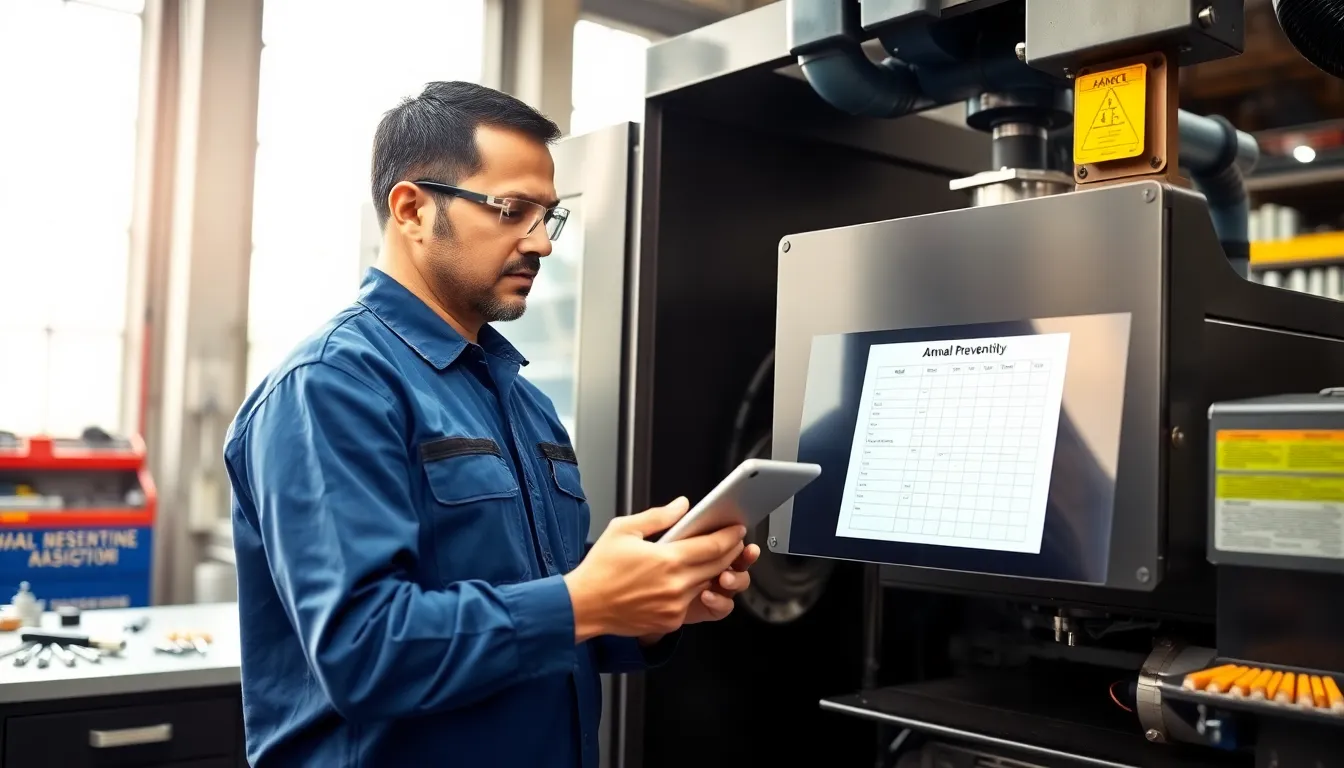Imagine a world where your machines don’t break down in the middle of a crucial moment. Annual preventive maintenance (APM) can be that golden key, ensuring everything runs like a well-oiled machine (pun intended.). In this text, we’ll jump into what APM is all about, why it matters like your morning coffee, and how to carry out a solid strategy without breaking a sweat. Let’s jump into the world of APM and take your maintenance game to the next level.
Table of Contents
ToggleUnderstanding Annual Preventive Maintenance

Annual preventive maintenance refers to the pro-active approach of performing routine checks and necessary repairs on equipment, machinery, or systems before they fail. Think of it as giving your car a tune-up before embarking on a long road trip. By establishing a schedule for maintenance activities, organizations can ensure their equipment operates optimally. This includes tasks like oil changes, filter replacements, and inspections. APM not only extends the lifespan of the equipment but also prevents costly downtime.
Benefits of Annual Preventive Maintenance
Adopting an annual preventive maintenance plan brings multiple benefits to the table:
- Cost Savings: Preventing breakdowns is more economical than reactive maintenance. By spending a little now, you save a lot later.
- Increased Equipment Lifespan: Regular inspections and maintenance ensure equipment longevity.
- Enhanced Safety: Well-maintained machines are less likely to malfunction, reducing the risk of accidents.
- Improved Efficiency: Routine maintenance helps in keeping systems running smoothly, which increases productivity.
- Compliance: Many industries have regulations requiring maintenance checks. APM ensures compliance with these legal and safety standards.
Key Components of an Effective Maintenance Plan
Creating a foolproof preventive maintenance plan involves several critical components:
1. Inventory of Equipment
Know what you have. Listing all machinery and outlining their usage helps establish maintenance priorities.
2. Maintenance Schedule
Set a clear timeline for routine checks. This could be monthly, quarterly, or annually, depending on the equipment’s needs.
3. Task Assignments
Decide who’s responsible for what. Assigning clear roles ensures accountability and efficiency.
4. Record Keeping
Maintain a database of maintenance activities. Documenting what was done and when helps track trends and future needs.
5. Budgeting
Allocate a budget for maintenance. Financial planning is crucial to ensure resources are available when needed.
Step-By-Step Process for Implementing Annual Maintenance
Implementing an effective annual preventive maintenance plan can seem daunting, but breaking it down into steps makes it manageable:
1. Assess Current Maintenance Practices
Evaluate how maintenance is currently conducted. Are there gaps? What can be improved?
2. Develop Your Maintenance Strategy
Consider frequency, tasks, and responsible personnel. Create a custom approach that suits your organization’s needs.
3. Train Staff
Ensure everyone understands their role in the maintenance process. Training is essential for compliance and efficiency.
4. Use Technology
Carry out maintenance management software to track tasks, schedules, and documentation. This can streamline the entire process.
5. Monitor and Adjust
Constantly review the effectiveness of your plan. Be ready to tweak aspects based on what’s working and what’s not.
Common Challenges and Solutions
While implementing annual preventive maintenance, several challenges may arise:
1. Resistance to Change
Employees may be accustomed to old routines. To combat this, communicate the benefits clearly and involve them in the process.
2. Time Constraints
Regular checks can feel time-consuming in the hectic workplace. Find a balance that incorporates maintenance into regular schedules without overwhelming staff.
3. Budget Limitations
Sometimes, financial constraints can limit maintenance efforts. Highlighting potential savings from preventive maintenance can help get buy-in from management.
Case Studies: Successful Implementation of Annual Preventive Maintenance
To illustrate the effectiveness of APM, let’s look at a couple of success stories:
Case Study 1: Manufacturing Plant
A manufacturing plant switched to an APM approach and saw a 30% reduction in equipment failure rates within the first year. They documented their maintenance activities, leading to optimized scheduling and immediate adjustments based on performance.
Case Study 2: Healthcare Facility
A healthcare facility adopted an annual plan and improved their compliance rates with safety regulations. This proactive approach led to enhanced safety standards and minimized equipment downtime, creating a better environment for both staff and patients.



